
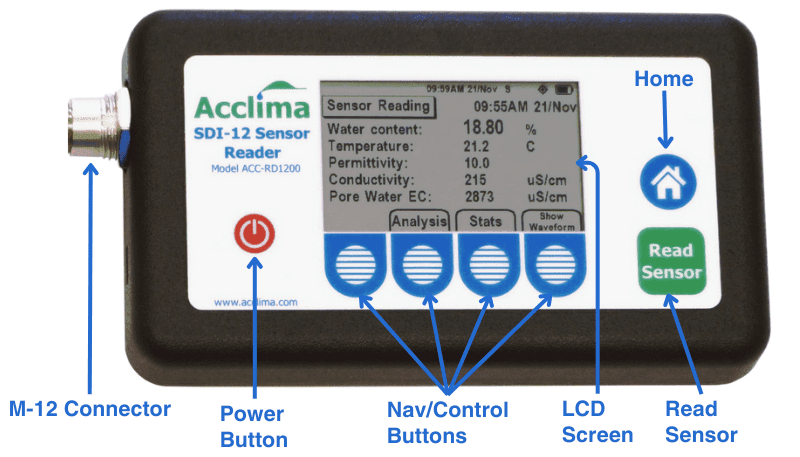

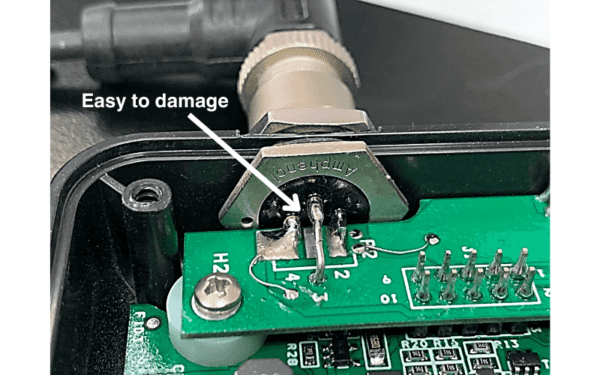
The provided Acclima USB interfaces with the Reader via a micro-USB port. This port is directional, and any device being plugged into the port must be in the right orientation for the device to function. Do not apply to much force inserting the USB device into the Reader or face the risk of damaging the micro-USB port or device.
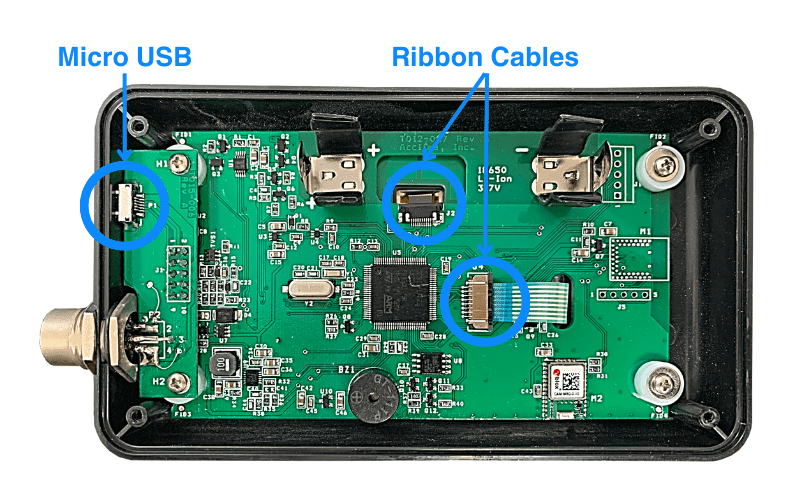

The Acclima Quick Connect Cable is a versatile accessory that allows easy pairing between a variety of different sensors.

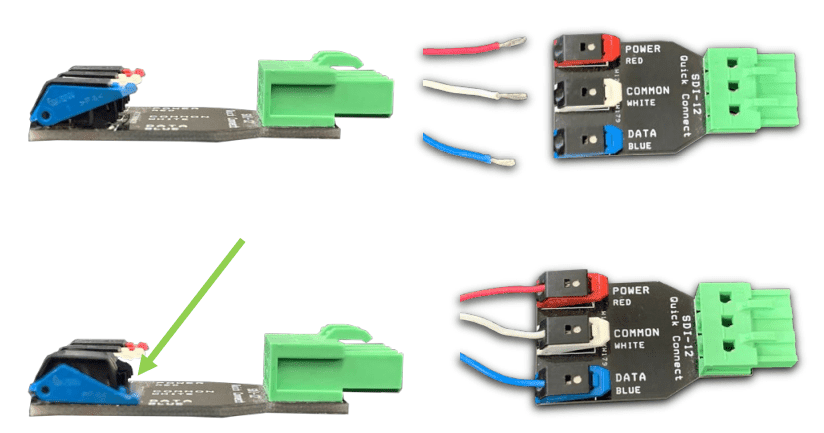
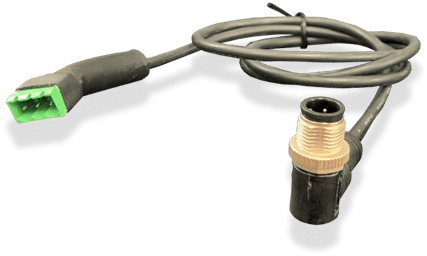

Readers with firmware version 1.7.0 and older, support flash drives with a micro-USB adapter, in the FAT32 (MBR) format.
Readers with firmware version 1.7.1 and newer, support exFAT and FAT32 formats.
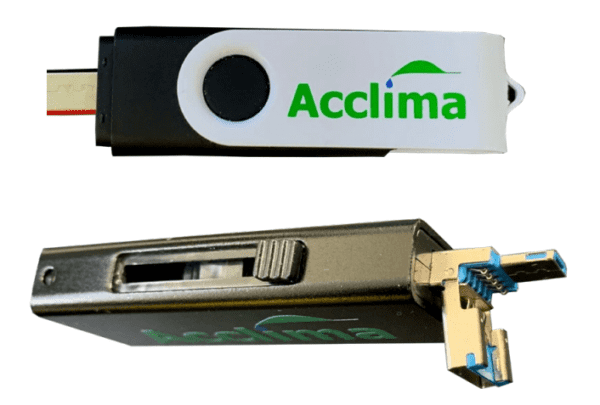

Sensors can be inserted in any orientation and will produce average readings as follows:
We recommend using a waveguide insertion tool to help guide the waveguide/rods into the media wall. This helps to prevent air gaps from forming around the sensor waveguides.

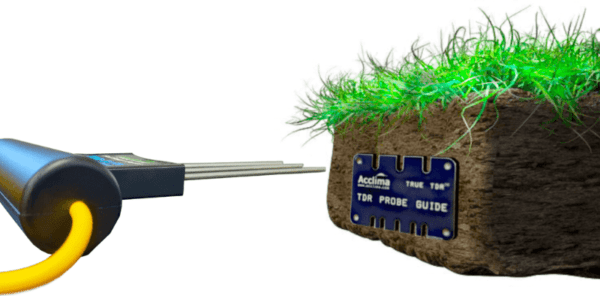



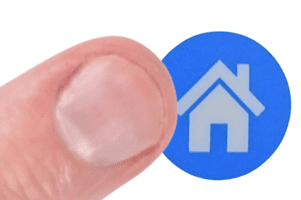

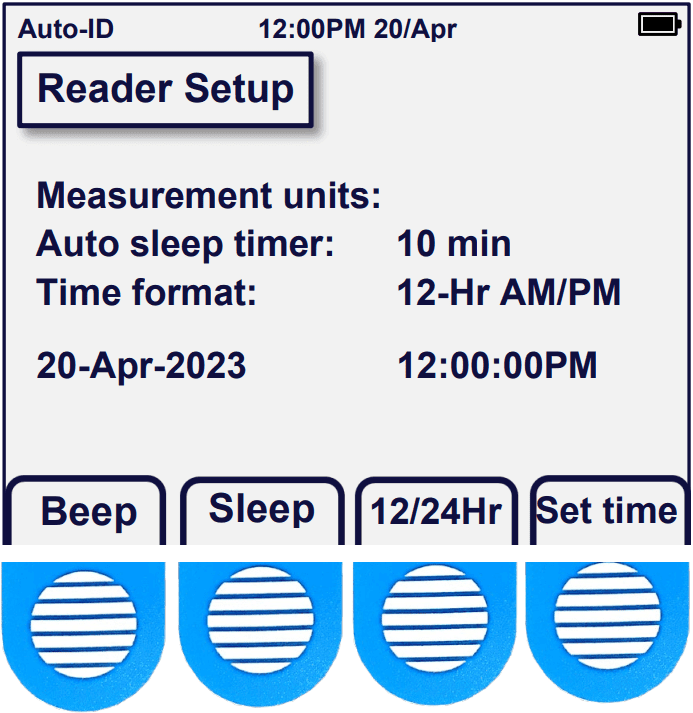
The Beep option allows the user to adjust the speaker volume. This changes the sound level for button presses and sensor readings. The volume can be set to low, high, or off. Press Home>Settings.
The Sleep option adjusts the auto-sleep timer, which is the time that the Reader will be allowed to remain inactive before auto power-off occurs.
The 12/24Hr option changes the clock to run in either standard or military time.
The Set time option allows the user to adjust the clock to correct for Daylight Savings time in their time zone.


Subsequently, you will see a stop-watch counter run as the Reader synchronizes with GPS satellites overhead. You must be outside to receive a clear signal.
Try to have a direct line-of-sight to the sky from horizon to horizon when turning on the GPS Radio. If a clear line-of-sight from horizon to horizon isn’t available, try to find an area with a lot of viewable sky. It usually takes 10 – 15 seconds to sync-up and acquire the signal. This may vary depending on your geographic location and other factors such as dense cloud cover and/or tall obstructions such as buildings and trees with dense foliage.

The time on your reader will be updated after synchronization with GPS satellites (but you may need go to the ‘Home’ screen, choose ‘Settings’ and choose ‘ Set time ‘ to change your time zone) or adjust for Daylight Savings Time.
Press the ‘Home’ button to return to the main menu.

To collect SDI-12 device readings with an Acclima Reader. First, verify a firm connection has been established with the sensor. Check that the locking nut has been screwed down correctly and is finger tight. Make sure that the Reader is powered [On] and press the ‘Read Sensor’ button.
Note: If more than one sensor is connected, you will need to enter the Reader into Bussed Mode.

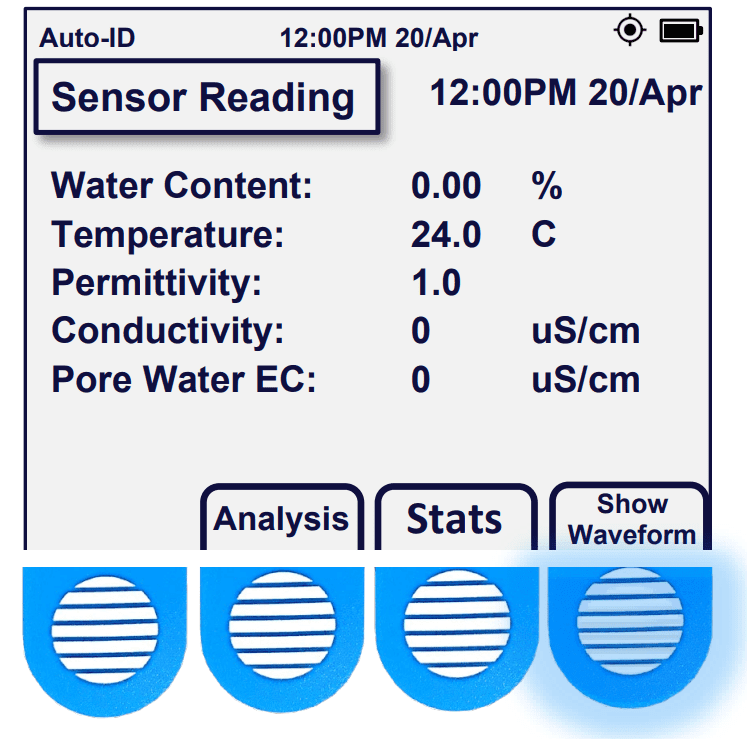
Note: Temperature accuracy requires the SDI-12 sensor to be buried at least 12 hours in subsurface soil.
A Waveform can be generated on the ‘Sensor Reading’ screen. Press the ‘Show Waveform’. After a few moments, a graph will be generated showing the steps in the reflected EM signal in a high-resolution waveform. For a closer look at the waveform, press ‘Zoom’. You can return to the data by pressing ‘Show Reading’.

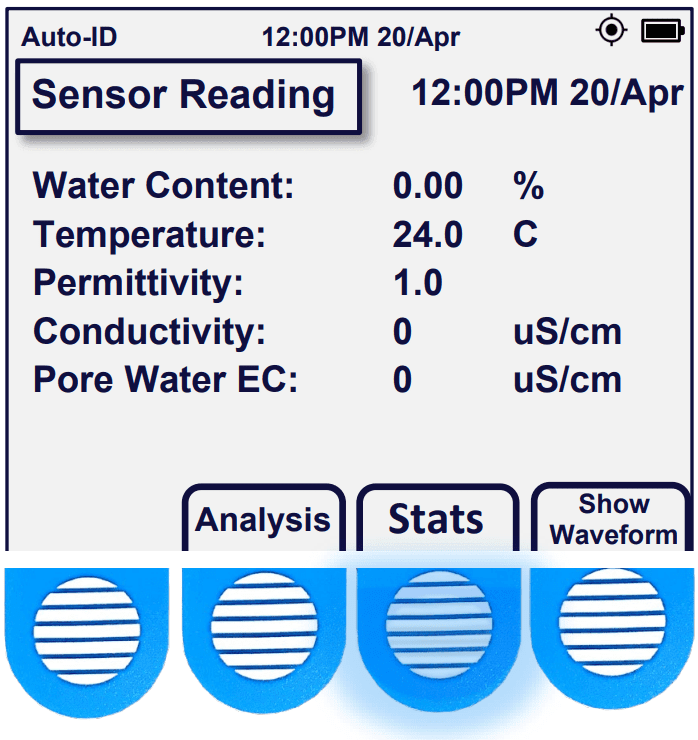
Note: At this stage if you have multiple sensors connected, you can collect
readings from the other sensors by pressing ‘Select Sensor’. You can then move to the next sensor by pressing ‘Next Sensor’, then take a new Reading by pressing ‘Read Sensor’.
If you press the ‘Analysis‘ button, you will be presented with the ‘Reading Analysis’ screen which can be useful for indicating the fill level of the soil’s field capacity (FC). The analysis will not provide accurate data unless thresholds are preconfigured by the user.
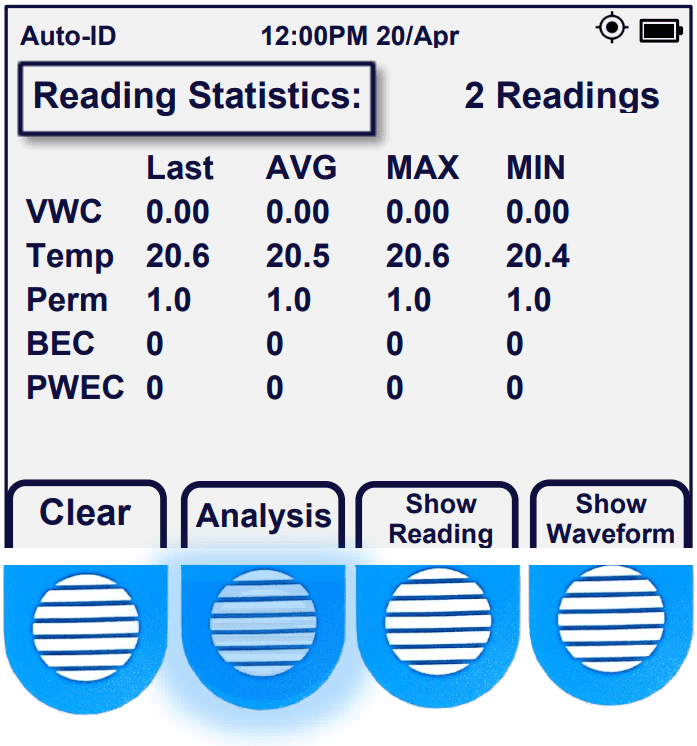
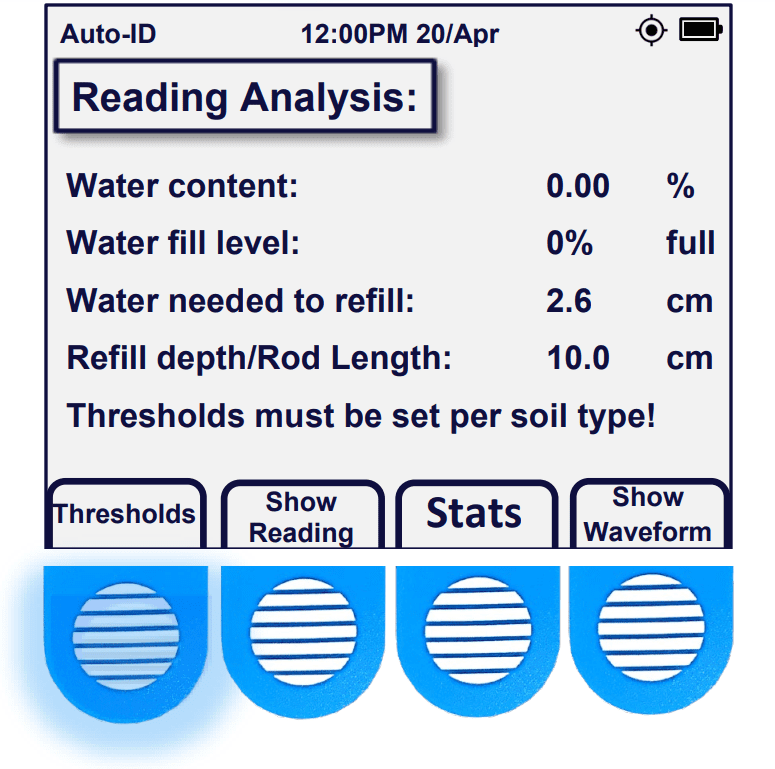
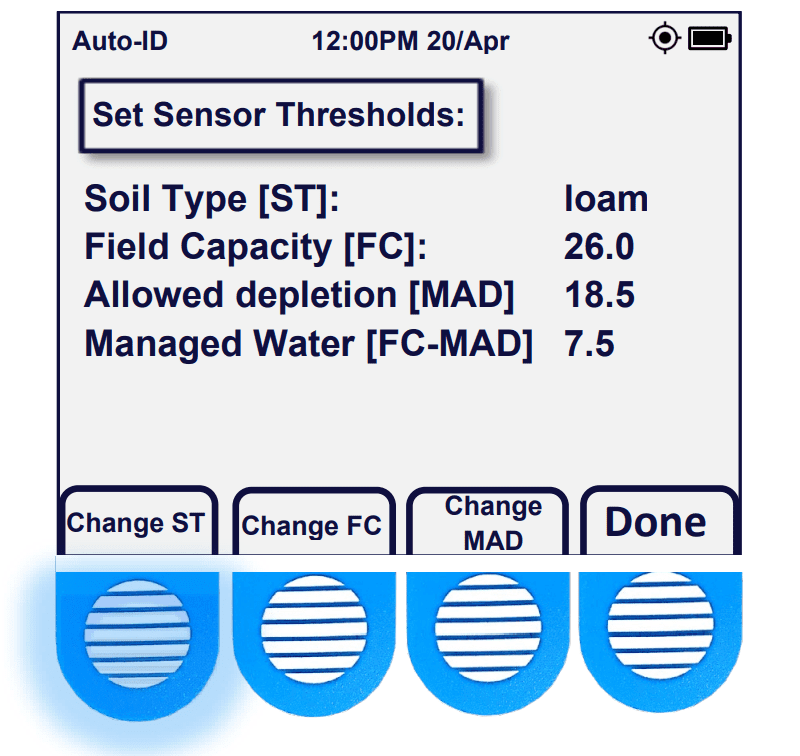
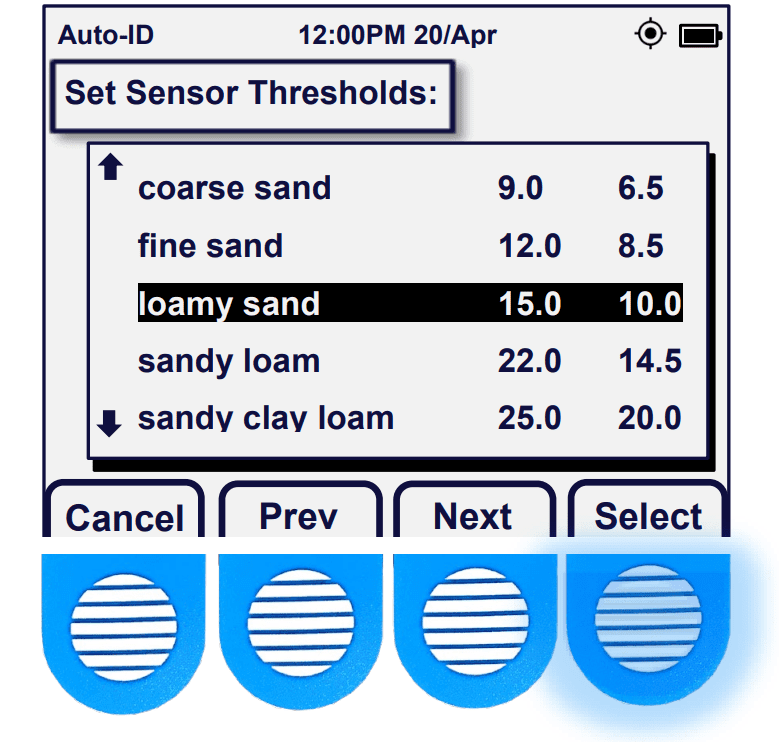
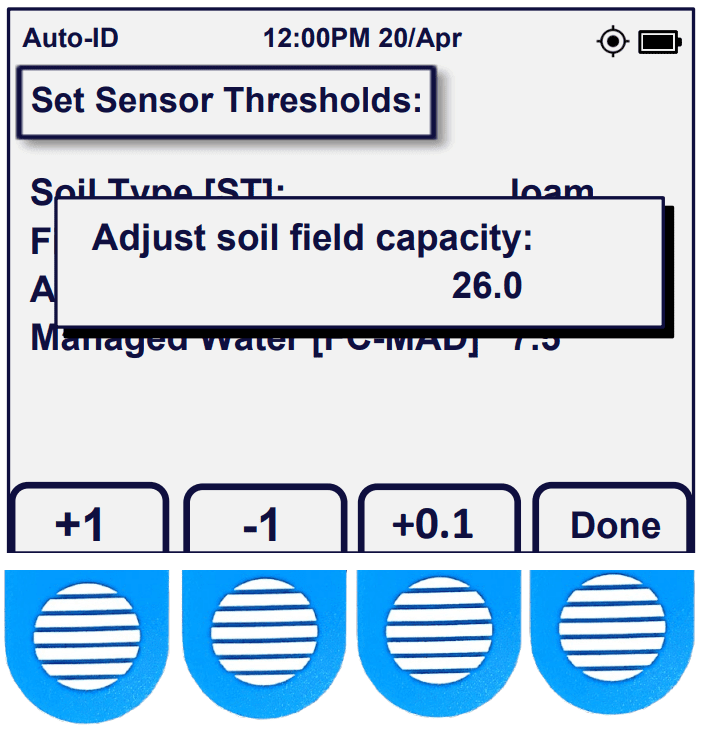
This wetness scale gives a depiction of the important stages of soil water content starting with Saturation at the top, where soil water content exceeds the surface tension of the soil particles driving the water down into the subsoil, washing away critical nutrients with it and potentially rotting the roots.
Field Capacity is the ideal soil water content that allows moisture, nutrients, and oxygen to stay around the roots.
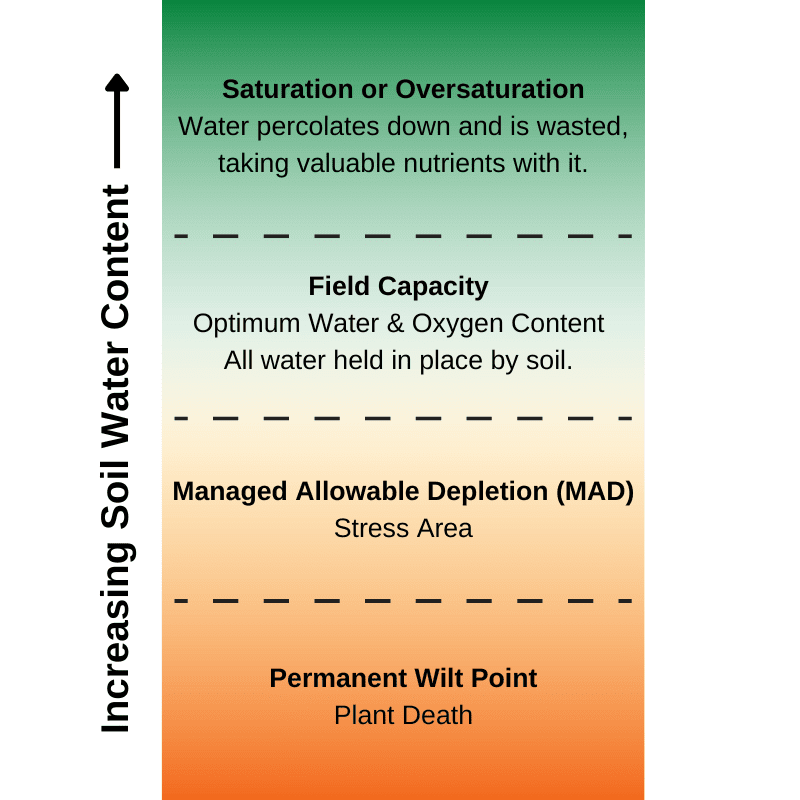

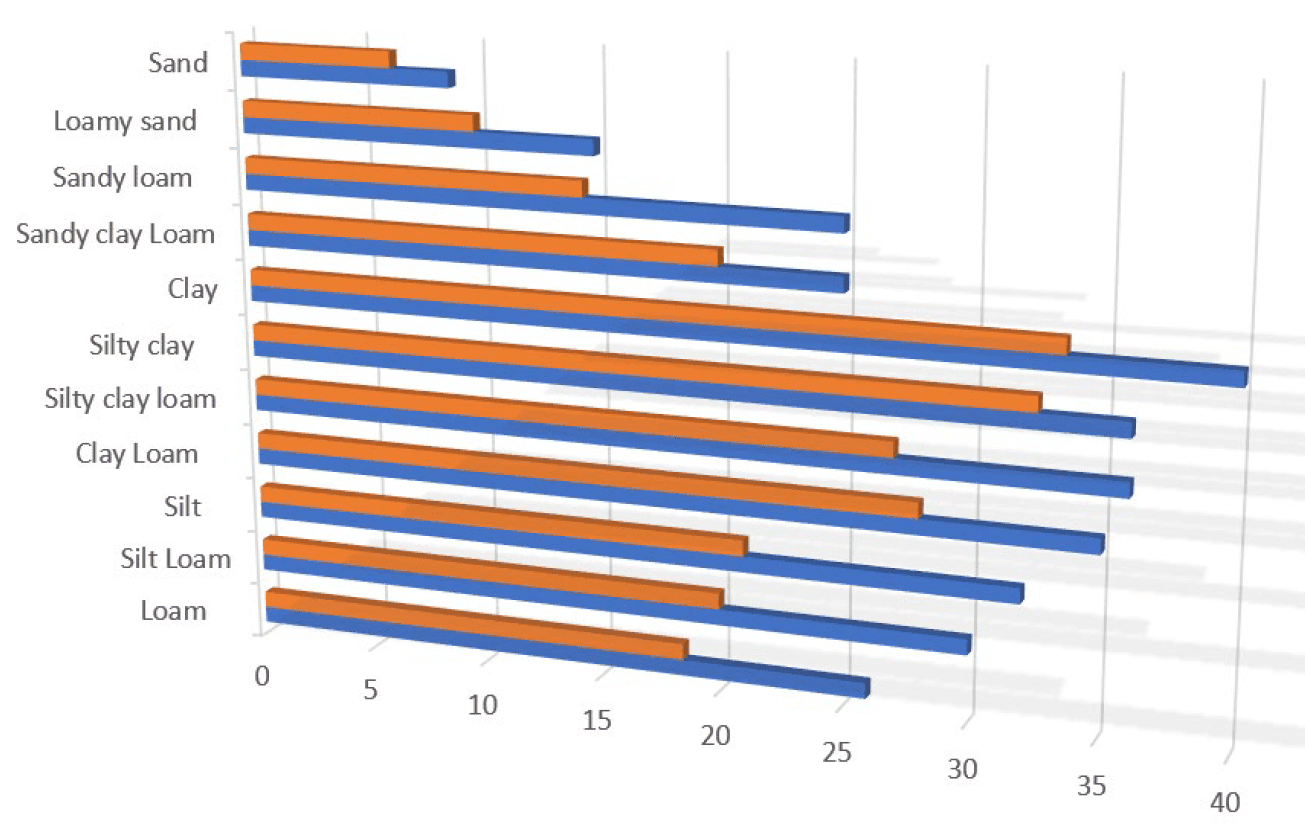
Some sensors may utilize an enhanced statistical analysis mode when collecting readings. This Mode may improve readings, by causing the sensor to perform improved statistical processing to better stabilize readings at the cost of power consumption and speed.
To enable Enhanced Analysis mode, press the button for ‘Sensor’ on the home page. Then select the “ Tools”.

If the detected sensor is compatible with the Enhanced Mode feature, a “Change Mode” button will be present.
On the ‘Sensor Tools’ page, press “Change Mode ” to change the analysis mode from ‘ Normal’ to “Enhanced”.

Note: The “Change Mode” option is not available in all sensor models or firmware versions.

Sensors displaying odd characteristics can be further troubleshooted with a nifty tool built into the Acclima Reader. This tool runs the V (verify command) found in the SDI-12 protocol.
To perform the ‘Verify’ command. Press the button for ‘Sensor’ on the home page, then press ‘Tools’.
Press the “Verify” button, to run the brief sensor diagnostic.
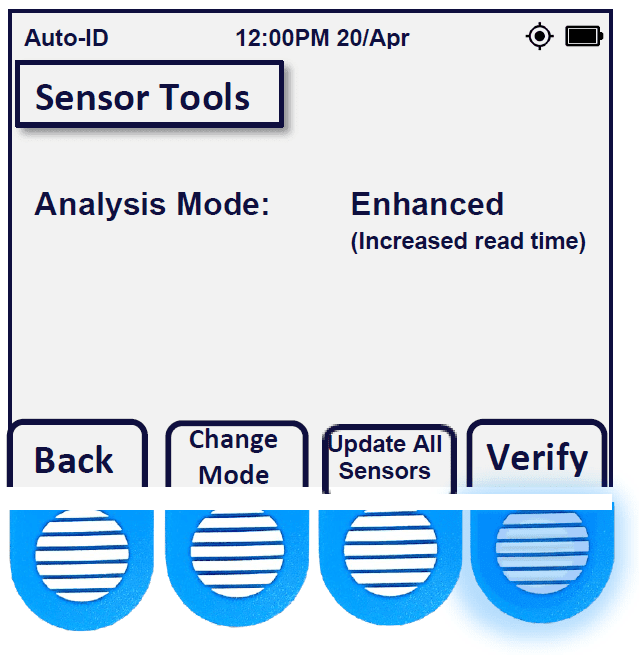
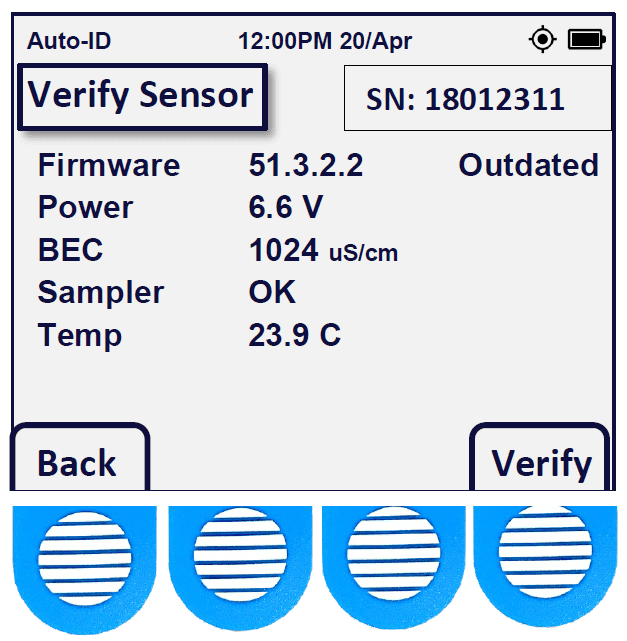
The firmware version is verified against an internal database containing all recent Acclima sensor firmware versions. Power to the sensor is tested to check the cable run for potential issues with the cable. Bulk EC is tested to retrieve any result within operating specification for that sensor model. The sensor’s digitizer is tested to verify samples(readings) are possible. Temperature is also tested to verify the sensor’s thermistor.
Warnings may appear next to these readings and actions should be taken to correct the issues when they arise.

By default, only one sensor can be viewed at a time. Enabling “Bussed Mode” allows up to 62 SDI-12 unique devices to be detected at once.
To enable Bussed Mode, simply reach page 2/3 from the ‘Sensor Setup’ by pressing the “ -More- ” button.
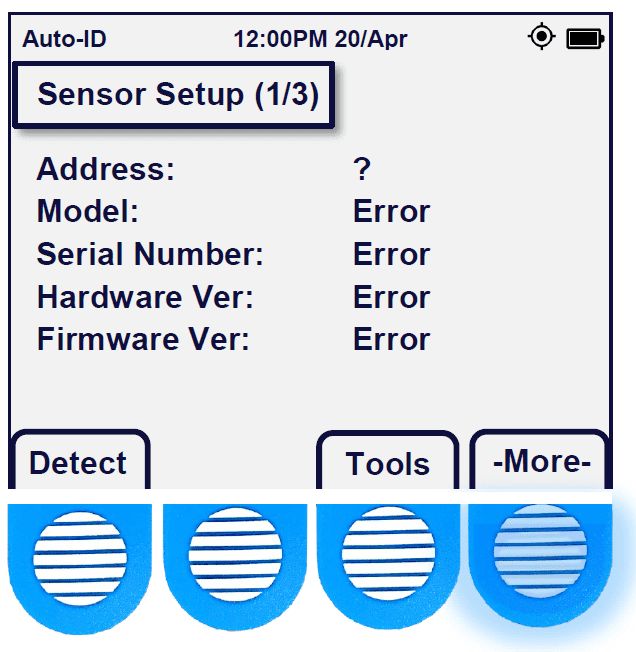

After entering ‘Bussed Mode’, a Bus icon appears in the top left header of the Reader display.
After entering ‘Bussed Mode’ it is recommended to press the ‘Scan ’ button to populate the detected sensors.

In ‘Bussed Mode’ each sensor connected to the Reader should have a unique sensor address. The sensor’s address allows the reader to differentiate each of the sensors from one another. Each sensor can choose a single identifying character as its ‘address’, which can be any of these types of characters: [0-9], [A-Z] or [a-z]. By default, the address will be set to “0”.
With a single sensor connected in the ‘Sensor Setup’ page press ‘Change Address’.
With a single sensor connected from the home page, press ‘Sensor’, then press ‘Detect ’. This action will prompt the sensor to reply with its identifying information or an error. To change the address, press ‘ -More-‘ and then press ‘Change Address’.

The current address will be displayed, and the new address can be cycled through from 0-9, A-Z or a- z by pressing the [+ Addr] or [- Addr] buttons.
Once the address is chosen, confirm it by pressing ‘Change Addr’.

Press “Home” button, then “Sensor” to see the new address on the “Sensor Setup” 1/3 page.

Sensor firmware updates can be sent to single or bussed sensors anytime a new update has become available.
First, load the update file onto the Acclima USB drive using the folder structure: Acclima\RD1200\Updates.
Insert the USB drive into the micro-USB port on the Reader. The Reader will synchronize and copy the files into the Reader’s memory.
Press the ‘Home’ button, then the ‘Sensor’ option.
On the ‘Sensor Setup page 1/3’. Press the ‘-More-‘ button until you reach ‘Sensor Setup page 3/3’. Then press, “Select Update”.
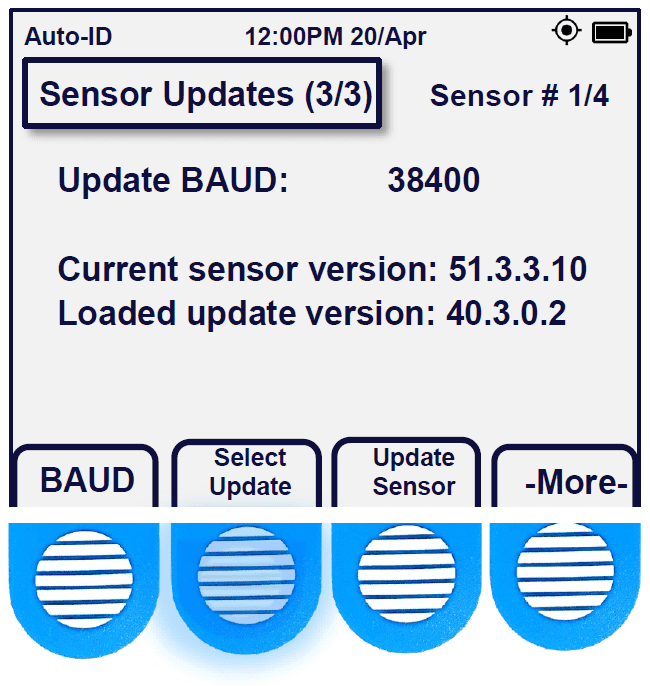
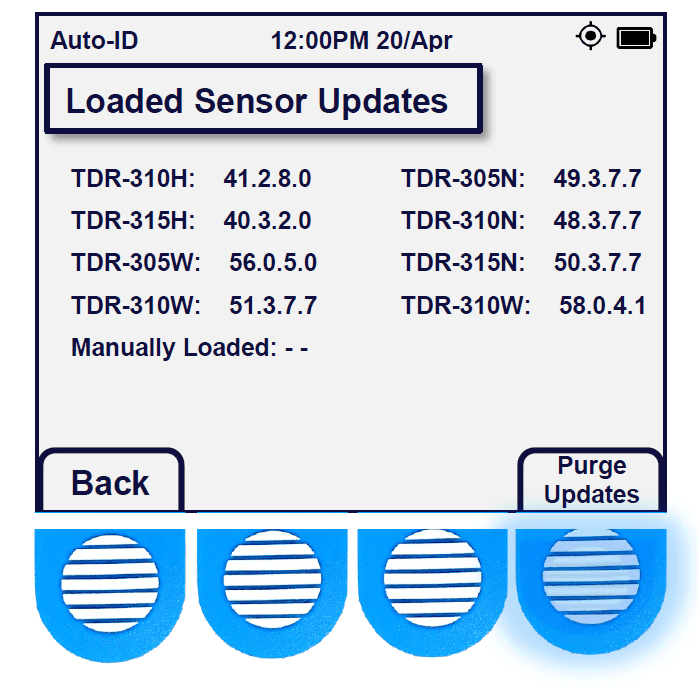

A progress bar will appear, including the selected sensor’s serial number. When the progress is complete, you will see “Confirming” and “Success” after the update has been verified.
Note: If the update speed is too fast or slow, it can be modified by adjusting the BAUD rate.
Multiple sensors can be updated at once using the Update All Sensors function.
To update one or more sensors automatically, press the ‘Sensors’ button on the home page. After reaching ‘Sensor Setup page 1/3’ press the “Tools” button.

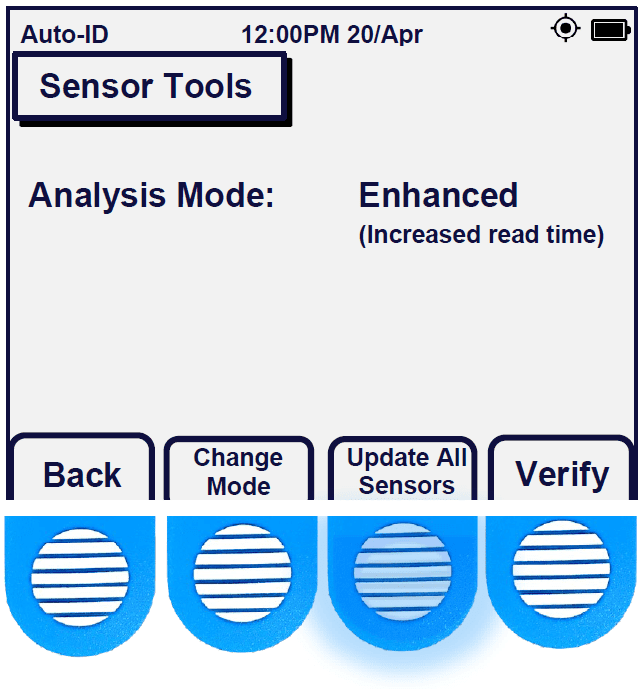

The Reader will perform the following tasks in sequence and can be canceled at any time.
When a sensor update fails it can be because of several reasons. The most common is that there may be too many sensors attached or the cables may be too long making it difficult for larger data files to be transmitted to the sensor without error. Adjusting the BAUD rate may improve the ability to transmit the updated file so that the sensor can receive it accordingly.
To change the BAUD rate, Press the ‘Sensor’ button on the homepage, and navigate to the ‘Sensor Updates’ page (3/3) by pressing the ‘-More-‘ button twice.
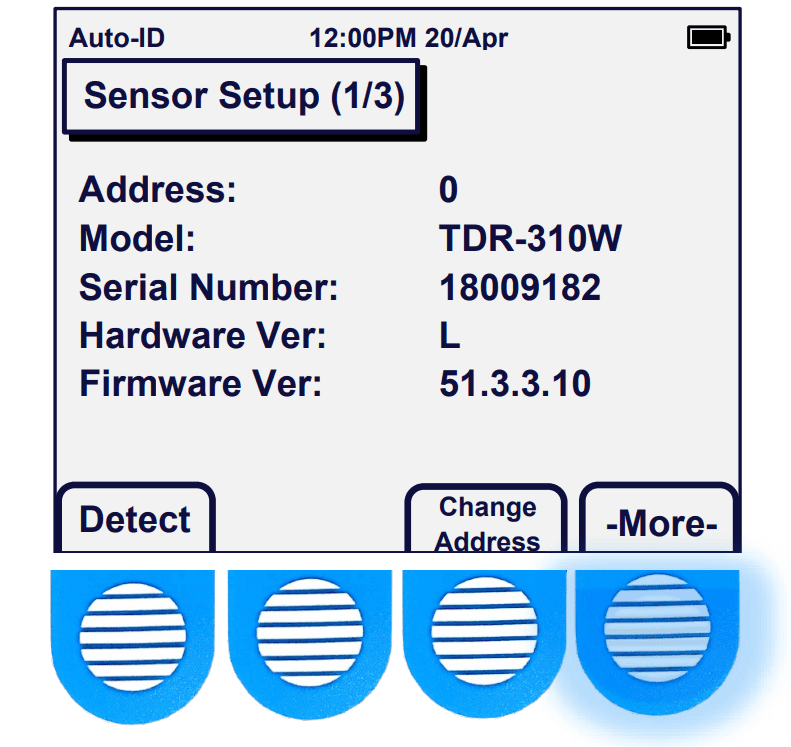
Here, you may press the “BAUD” button.
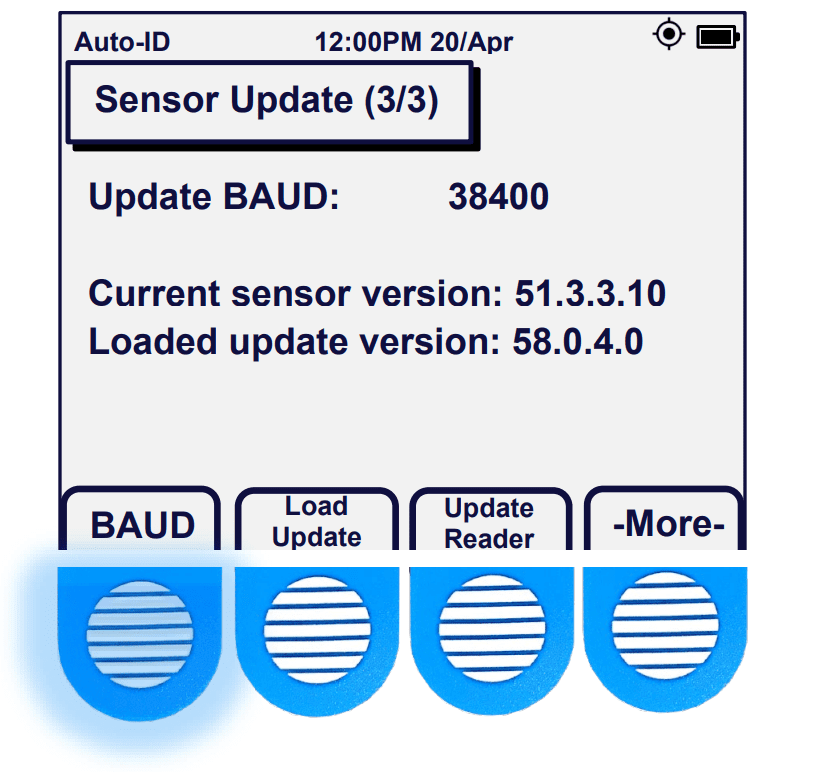
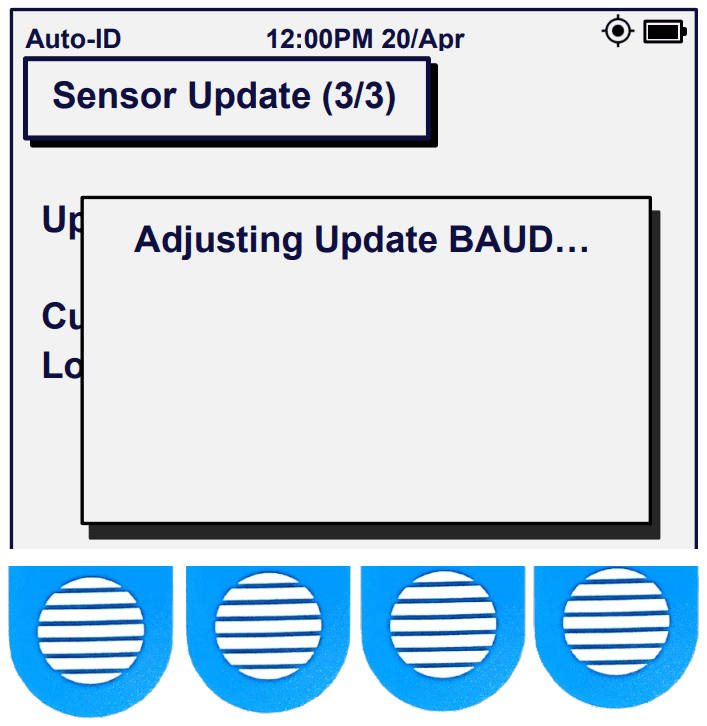

From the ‘Home Screen’ press the ‘Data ’ button. The ‘Data’ page provides you with the memory usage information (must be at least 1% to show up). You can select your preferred ‘ Data Output ‘ by pressing that button and toggling through ‘CSV” only, ‘CSV and binary’, or just ‘binary’. This data will then be able to be transferred to your micro-USB drive in the preferred format when it is plugged into the Reader.
The ‘Erase Logs‘ button allows you to erase all log data.



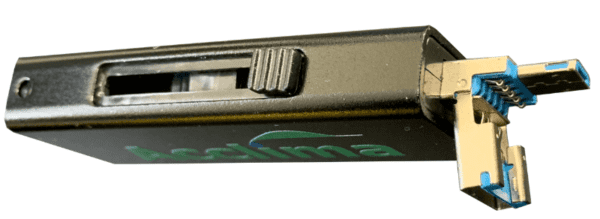
Do not disconnect the thumb drive until the Reader indicates the synchronization is complete. It will only take a moment to synchronize. Please note that data can only be transferred using a thumb drive. A direct connection between the PC and the Reader will only charge the Reader’s battery, not transfer data.
If you desire to apply a new firmware update that becomes available for the Sensor Reader on the Acclima.com website, you should download it into the Acclima\RD1200\Updates folder on the thumb drive. Then when you plug the thumb drive into the micro-USB port on the Sensor Reader (while powered on), it will automatically update.




Copyright Acclima ©, Inc. All rights reserved.